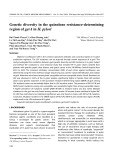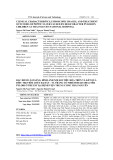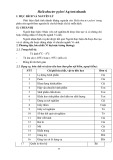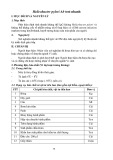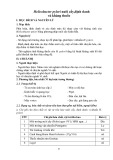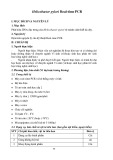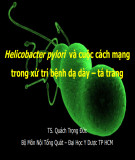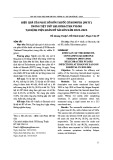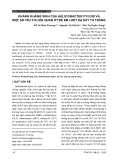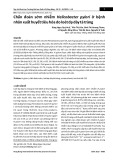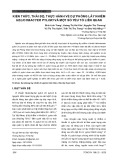
Can Tho Journal of Medicine and Pharmacy 10(7) (2024)
180
A REVIEW ON CURRENT TRENDS IN Helicobacter pylori
MANAGEMENT WITH MEDICINAL PLANTS AND ITS CONSTITUENTS
Huynh Anh Duy1*, Huynh Ngoc Thuy2, Tran Hung2
1Can Tho University
2University of Medicine and Pharmacy at Ho Chi Minh city
*Corresponding author: haduy@ctu.edu.vn
Received:08/04/2024
Reviewed:11/05/2024
Accepted:18/05/2024
ABSTRACT
Helicobacter pylori is a bacterium associated with gastric diseases and disorders of the
upper gastrointestinal tract. The gram-negative bacterium Helicobacter pylori is known as a
persistent colonizer of the human stomach, and this bacteria is also involved in extra-intestinal
diseases. In 1994, the International Agency for Research on Cancer, World Health Organization
classified H. pylori as a class 1 carcinogen, the only bacterium given this classification. Besides,
the emergence of H. pylori resistance to antibiotics has been a major clinical challenge in the field
of gastroenterology, and this concern has been shown an increasing tendency in many regions of
the world. To overcome the current circulating difficulties, new potential therapeutic targets were
uncovered to find active substances for the treatment of H. pylori infection. Several medicinal plants
and their isolated compounds have been reported for their antimicrobial activity against H. pylori.
It is demonstrated that they are efficacious against H. pylori strains that are resistant to drugs. The
mechanism of action of many of these plant extracts and plant-derived compounds is different from
that of conventional antibiotics. Therefore, natural compounds are emerging as a potential source
of raw materials with diverse mechanisms of action. Some commonly known mechanisms can be
listed as anti-urease activity, anti-adhesive activity, anti-inflammatory and gastroprotective activity,
and effects on the oxidative stress process. Recently, new classes of drugs with reasonable
antibacterial mechanisms against H. pylori have also been mentioned, including (1) anti-biofilm
agents, (2) anti-virulence molecules (anti-VacA, anti-CagA agents, toxin BabA and LPS inhibitors,
anti-motility agents, Helicobacter pylori quorum sensing inhibitors), (3) mucolytic agents, and (4)
compounds that impact on essential proteins in the physiology of H. pylori such as inosin-5‘-
monophosphate dehydrogenase and HsrA inhibitors. This review article aims to summarize current





